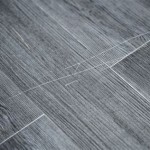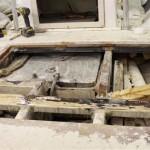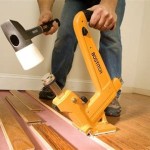Brazilian Teak Flooring Reviews: A Comprehensive Overview
Brazilian Teak, scientifically known as *Cumaru*, is a popular hardwood flooring option renowned for its durability, natural beauty, and resistance to decay and insects. This article provides a comprehensive overview of Brazilian Teak flooring, examining its key characteristics, advantages, disadvantages, pricing, installation considerations, and maintenance requirements. The information presented is intended to assist individuals in making informed decisions regarding whether Brazilian Teak is the right flooring choice for their specific needs and circumstances.
Understanding the properties of Brazilian Teak is crucial before considering its installation. Unlike true Teak (Tectona grandis), harvested primarily in Southeast Asia, Brazilian Teak originates from South America, specifically Brazil. Despite the common name, it is not botanically related to true Teak. However, it shares some similar performance characteristics, particularly concerning its density and hardness. This makes it a desirable alternative, often at a more accessible price point.
Key Point 1: Durability and Hardness
One of the most significant advantages of Brazilian Teak flooring is its exceptional durability. Measured using the Janka hardness scale, Brazilian Teak typically scores above 3,500. This rating indicates its resistance to scratches, dents, and wear, making it suitable for high-traffic areas in residential and commercial settings. For comparison, Red Oak, a commonly used hardwood flooring option, has a Janka hardness rating of around 1,290. The higher Janka rating of Brazilian Teak demonstrates a substantially greater resistance to indentation.
This hardness translates directly into longevity. With proper care, Brazilian Teak flooring can maintain its aesthetic appeal and structural integrity for decades. This makes it a valuable investment, potentially increasing the resale value of a property. Furthermore, its resistance to everyday wear and tear minimizes the need for frequent refinishing or replacement, reducing long-term maintenance costs.
The dense grain structure of Brazilian Teak contributes to its durability. This close-grained structure prevents moisture penetration, further enhancing its resistance to warping and cracking. This attribute is particularly beneficial in areas with fluctuating humidity levels, such as bathrooms and kitchens, although proper acclimatization and sealing are still recommended.
Key Point 2: Aesthetic Appeal and Design Versatility
Brazilian Teak is valued for its natural beauty. The wood exhibits a rich, warm color palette, ranging from golden brown to reddish-brown hues. This natural variation creates a visually appealing and inviting atmosphere in any space. The grain patterns are typically interlocked, adding depth and character to the flooring surface.
The inherent color variations within Brazilian Teak allow for a wide range of design possibilities. It can complement both traditional and contemporary interior design styles. The warm tones create a sense of timeless elegance, while the unique grain patterns add visual interest and sophistication. This versatility allows homeowners and designers to achieve a customized look that reflects their individual preferences.
Brazilian Teak flooring is available in various plank widths and lengths, further enhancing its design flexibility. Wider planks tend to create a more expansive and luxurious feel, while narrower planks can be used to achieve a more traditional or rustic aesthetic. The availability of different finishes, such as matte, satin, and glossy, allows for further customization of the flooring's appearance and performance characteristics.
However, it's important to note that Brazilian Teak can darken over time when exposed to sunlight. This color change, known as photo-oxidation, is a natural process that occurs in many wood species. While some individuals appreciate the deepening of the color, others may prefer to minimize this effect by using window treatments or UV-resistant finishes.
Key Point 3: Installation and Maintenance Considerations
The installation of Brazilian Teak flooring requires careful attention to detail. Due to its density and hardness, it is generally recommended to use professional installers who have experience working with hardwood flooring. Proper subfloor preparation is essential to ensure a stable and level surface for the flooring. This may involve leveling the subfloor, repairing any damage, and installing a moisture barrier.
Brazilian Teak can be installed using several methods, including nail-down, glue-down, and floating installations. The choice of installation method depends on the specific characteristics of the subfloor and the preferences of the homeowner. Nail-down installations are typically used for solid hardwood flooring, while glue-down installations are often preferred for engineered hardwood flooring. Floating installations involve interlocking the planks together without attaching them directly to the subfloor.
Maintaining Brazilian Teak flooring is relatively straightforward. Regular sweeping or vacuuming is necessary to remove dust and debris. Damp mopping with a pH-neutral wood floor cleaner is recommended to remove dirt and grime. Avoid using abrasive cleaners or excessive amounts of water, as these can damage the finish and potentially lead to warping or staining. Promptly clean up spills to prevent staining.
Periodic refinishing may be necessary to restore the flooring's original luster and remove any scratches or wear marks. The frequency of refinishing depends on the level of traffic and the care of the flooring. In general, Brazilian Teak flooring can be refinished multiple times, extending its lifespan significantly.
Acclimatization is a crucial step in the installation process. Allowing the Brazilian Teak planks to adjust to the ambient temperature and humidity conditions of the installation environment for several days before installation helps to minimize expansion and contraction after installation. This prevents warping, cracking, and gapping.
Beyond the general recommendations, considerations for specific types of Brazilian Teak products are necessary. Engineered Brazilian Teak flooring, for instance, consists of a thin veneer of Brazilian Teak bonded to a core of plywood or other composite material. This construction offers increased dimensional stability compared to solid hardwood flooring, making it less susceptible to warping in humid environments. However, engineered hardwood flooring can typically only be refinished a limited number of times, depending on the thickness of the veneer.
Solid Brazilian Teak flooring offers the advantage of being refinishable multiple times, allowing for a longer lifespan. However, it is more susceptible to expansion and contraction due to changes in humidity. Therefore, proper acclimatization and humidity control are essential for solid Brazilian Teak flooring installations.
The cost of Brazilian Teak flooring can vary depending on factors such as the grade of the wood, the plank width, and the finish. Generally, it is priced higher than more common hardwood flooring options like Oak or Maple. However, the increased durability and aesthetic appeal of Brazilian Teak often justify the higher cost for individuals seeking a long-lasting and visually striking flooring solution.
Environmental considerations are also relevant when choosing Brazilian Teak flooring. It is important to ensure that the wood is sourced from sustainably managed forests. Look for certifications such as the Forest Stewardship Council (FSC) to ensure that the flooring is harvested in an environmentally responsible manner. This helps to protect the rainforests and promote sustainable forestry practices.
In conclusion, Brazilian Teak flooring offers a combination of durability, beauty, and versatility, making it a desirable flooring option for many homeowners and designers. Its exceptional hardness, rich color variations, and resistance to decay make it a valuable investment that can enhance the aesthetic appeal and value of a property. However, careful consideration should be given to the installation, maintenance, and environmental aspects of choosing Brazilian Teak flooring to ensure optimal performance and sustainability.

3 1 4 X Brazilian Teak Clear Grade Prefinished Solid Hurst Hardwoods

Natu Ecoline Natural Brazilian Teak 5 In W X 3 4 T Varying Length Smooth Traditional Solid Hardwood Flooring 23 Sq Ft Carton The Department At Com

Problem With Brazillian Teak Flooring Cumaru

Brazilian Teak Natural 3 4 Solid Hardwood Flooring Weshipfloors

The Pros And Cons Of Teak Flooring 2024 Today S Homeowner

Brazilian Teak Indusparquet 50 Years Of Quality Service

Natu Ecoline Natural Brazilian Teak 5 In W X 3 4 T Varying Length Smooth Traditional Solid Hardwood Flooring 23 Sq Ft Carton The Department At Com

5 X 1 2 Engineered Brazilian Teak Stain Hardwood Flooring Hardwoods4less Com

Prefinished Brazilian Teak Engineered Best Hardwood Floor S

Brazilian Teak Hardwood Flooring At Com
Related Posts








